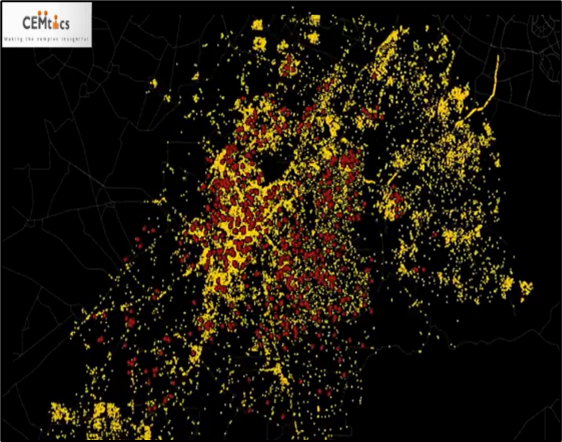
Key Factors Effecting Flattening the Curve & When the Lockdown Should Open
Click to view the PDF version: COVID19 Simulation Model Cemtics
PREFACE
As the world braces itself with the impact of Coronavirus Pandemic, the human life, businesses and the economic situation have been thrown out of gear. With more than 1.5 million cases worldwide and threat of increasing fatalities, Governments have been thrust into constant action mode, with challenges ranging from managing populace and healthcare resources. The enforcement of restricting people movement and limiting human contact has become a vital measure for most countries, in a bid to ground the rising curve.
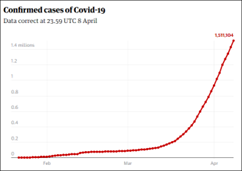
Flattening the Curve
The studies done around this Pandemic have emphasized on “Flattening the Curve” approach. Social distancing, by way of limiting human contact, being a key measure for this. Various countries have resorted to steps like quarantine, lockdown with few taking extreme measures like Curfew. Government of India, keeping in mind the perceived threat, to its large population size, imposed a complete 21-day lockdown in mid-March. With uncertainty looming around easing of restrictions, it is important to understand the factors in a lockdown that are most impactful in limiting the spread of the virus.
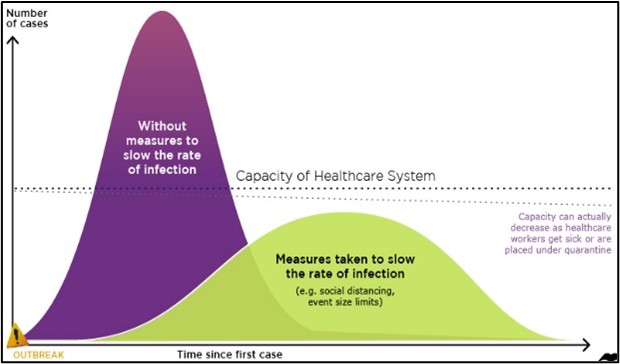
OBJECTIVE
CEMtics (Customer Experience Management Analytics) is a big data analytics company specializing in mobility / geolocation analytics. Cemtics team while working from home during the lockdown, has been analyzing the global data on COVID 19 and was interested in creating a model that could help drive action and enable better and more informed decision making.
The major objective of this study is:
- To determine the key factors that influence the spread of the virus and can help to flatten the curve.
- To predict rate of virus spread given variation of lockdown conditions for better decision making
HOW?
CEMtics has tried to create a model using data from cities across the world where various degrees of social distancing / lockdown steps were implemented. Cemtics has used the SEIR (Susceptible -> Exposed -> Infectious -> Recovered) Model common in epidemiology studies as the basic building block. CEMtics model is built by combining the machine learning techniques with simulation modeling.
Cemtics team analyzed the rate of spread of the virus in a wide variety ofglobal cities with different population density, demographic data and mobility data to identify key factors and create a predictive model. Google has recently made public data pertaining to changes in mobility patterns which was very helpful in the study.
Example from Europe:
The google mobility data shows that one of the European cities ravaged by COVID19 was following softer quarantine norms in Feb and the first half of march. During this time, virus was increasing exponentially. A much more aggressive lockdown was implemented in the second half of march resulting in an inflection point and a reduction in the grow rate. But the damage had already been done.
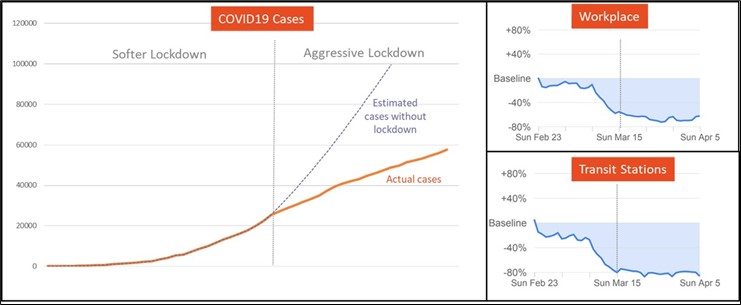
Examples from the US:
Similar data from US cities was analyzed along with population demographic data, population density, usage of public transport etc. to tune the model further.

The study also found differences in the amount of testing in different countries that would impact the reported no. of cases. This has been considered in the analysis and controlled for in the model.
Factors and Underlying Elements
Our analysis resulted in 2 main groups of factors that can most accurately model and predict the spread of the virus in a city.
- Contact Probability: based on the population demographics of the city
- Lockdown Aggressiveness: based on the mobility (or lack thereof)
Contact Probability
The probability of the spread of the virus by coming in contact with the infected person, directly or indirectly, depends on the following key factors. These factors are mainly determined by the population demographics of a city. Their impact (low to high) w.r.t. the prediction of spread of the virus is also shown in the image below:

Lockdown Aggressiveness
By analyzing the mobility patterns in the city, the team created a lockdown factor which simulated the functioning (or lockdown) of various services in a city and its impact on people-to-people interaction and in turn the spread of the virus. We have also included weekend impact to strengthen our prediction.
Factors, included in our study, that could impact the Lockdown Aggressiveness are depicted in the image below.
The model enables one to gauge the effectiveness of lockdown of various public services like public transport, schools, offices retail etc. on the spread of the virus.

Delhi NCR Analysis
Having achieved a reasonable level of accuracy in the prediction of COVID cases using reference data sets of US and Europe, the team started to fine tune the model for India. The CEMtics model has also tried to control for the low testing ratio compared to the west.

Government of India imposed a 21 Days complete lock-down starting 25th March. The numbers forecasted by the CEMtics model are in line with the actual numbers.
Delhi Mobility Simulation
Cemtics team developed a model to simulate the mobility of the population in the Delhi NCR area. Population density data, demographic data and other publicly available information was used to fine tune the various parameters needed for this complex model. Pl note this is a simulation and not actual tracing of people.

Various lockdown scenarios, as mentioned earlier,were applied to this simulation to ascertain the effectiveness w.r.t. the spread of the virus.
Results
Below chart illustrates the impact of lockdown aggressiveness on the rate ofspread of the virus in Delhi NCR. This can help determine what services can be enabled post lockdown and the impact on the virus spread.
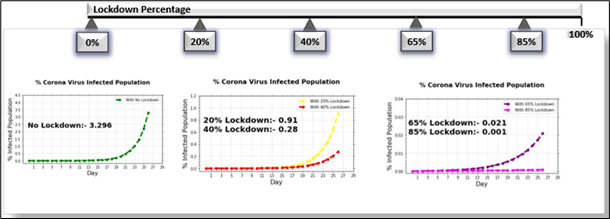
CONCLUSION
The CEMtics model used the SEIR model as its basic building block. The team used data sets from different geographical areas for its analysis and prepared a predictive model for Covid19 spread. Simulation of population mobility patterns and other key factors was done to analyze the impact of key services. Some concluding comments from our study are:
- For Delhi NCR, the lockdown should continue with a certain rate of aggressiveness to control the rising curve.
- Cemtics Model for forecasting spread of virus worked well for different countries with a very high level of accuracy.
- Contact Probability and Lockdown Aggressiveness need to be modeled using specific data for a particular geography / city. Some of this data is not readily available and hence all assumptions should be carefully analyzed.
Simulation Video:
The Cemtics team has create a video to visualize the population mobility simulation and the effects of lockdown. The video compares the no lockdown to a 60% lockdown condition.
Please Note: This is just a simulation and the location of the hot spots are based on randomly generated initial virus infections.

DISCLAIMER
CEMtics is an analytics company with a lot of mobilitygeolocation analytics experience, it does not possess any expertise in epidemiology. The information shared in this document is purely based on our analytical work using the machine learning model and algorithms.
Certain pictorial representations in this document are not the actual case scenarios but the CEMtics’ simulation in different lockdown conditions. The results do not highlight any real hotspot region.
REFRENCES
- https://www.worldometers.info/coronavirus/#countries
- https://www.statista.com/study/71023/coronavirus-covid-19-in-italy/
- https://www.citypopulation.de/en/italy/admin/03__lombardia/
- https://moovitapp.com/insights/en/Moovit_Insights_Public_Transit_Index-223
- https://www.statista.com/statistics/1107370/india-coronavirus-covid-19-tests-per-day/
- https://www.icmr.nic.in/press-release
- https://www.gstatic.com/covid19/mobility/2020-03-29_US_New_York_Mobility_Report_en.pdf
- https://www.google.com/covid19/mobility/

